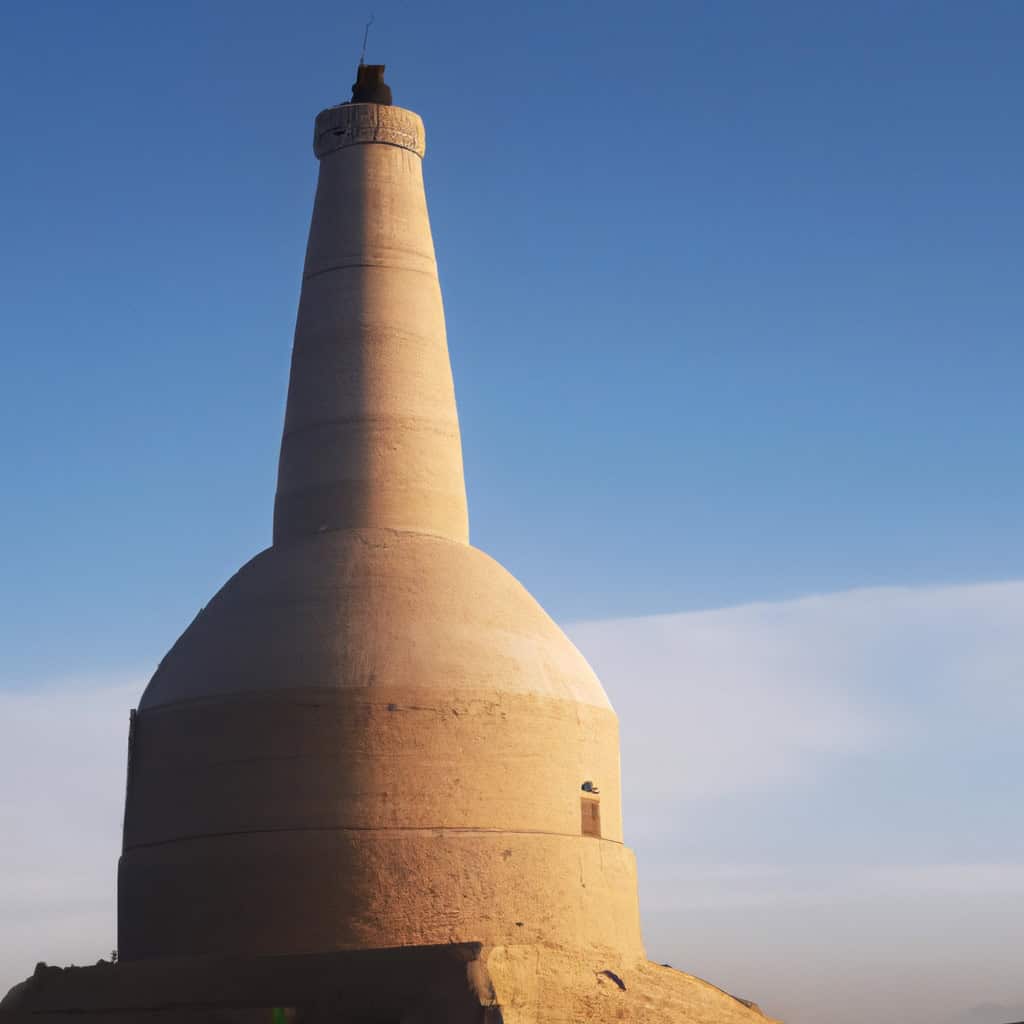Darunta Stupa in Jalalabad, is one of many fascinating sites that both foreign visitors and local tourists can explore while they visit Afghanistan and exploring Nangarhar Province. This ancient Buddhist site is steeped in history and cultural significance, offering a unique window into the past. Located in the eastern part of the country near the city of Jalalabad, Darunta Stupa speaks volumes about the rich and multi-layered history of Afghanistan. It serves as a testament to the diverse religious influences that have shaped the country.
It’s not just an archeological site; it’s an enduring symbol of cultural diversity, resilience, and the historical evolution of the region. Over centuries, various dynasties have left their imprint on this ancient monument, making it a living, breathing capsule of the past.
Darunta Stupa Most Important Events
- The Buddhist Era: Darunta Stupa rose to prominence during the 1st century AD in the Buddhist era. The rulers of the time, the Kushans, greatly patronized Buddhism, resulting in the construction of numerous stupas, including the Darunta Stupa.
- The Islamic Invasion: With the Islamic invasion in the 7th century, the region saw a religious shift. However, instead of being wiped out, the Darunta Stupa managed to survive, serving as a symbol of peaceful coexistence of the two faiths.
- The Afghan Civil War: Despite significant damage due to civil war, the Stupa remains, reminding us of Afghanistan’s resilience.
History of Darunta Stupa in Jalalabad
Historically, the Darunta Stupa, dating back to the 1st Century AD, is one of the few remnants from the region’s Buddhist era. During this time, the Kushan Dynasty actively propagated Buddhism, resulting in the construction of many places of worship and meditation, including the Stupa at Darunta.
The 7th century saw the arrival of Islam in the region, leaving an indelible mark on its history. The Stupa continued to exist, albeit with visible impacts of the changing times. It carried imprints of the Islamic architectural styles, artworks, and inscriptions, stabilizing itself as an enduring symbol of religious harmony.
In recent history, the Afghan Civil War in the 1990s caused significant damage to the Darunta Stupa and its surrounding area. Despite this, the Stupa remains, providing an enduring testament to the rich history and resilience of the Afghan people and culture.
Why It’s Important to Afghan History
By surviving through several cultural shifts, Darunta Stupa provides a fascinating insight into the multi-layered history of Afghanistan. It serves as a testament to the nation’s resilience and the peaceful coexistence of different religious communities.
Besides, its historical importance extends to archaeological significance as well. In the 1960s, a trove of Sanskrit manuscripts was discovered near the Stupa, which shed light on the region’s past and connection to ancient India.
Why to Visit Darunta Stupa
Darunta Stupa is a must-visit for anyone interested in history, culture, archaeology, or simply seeking an offbeat travel experience. The compelling combination of age-old architecture and the mesmerizing natural beauty of the surroundings never fail to leave visitors spellbound.
Moreover, the stupa is deeply ingrained in the local culture, providing visitors an opportunity to connect with local stories, traditions, and flavors. This blend of the old and new, tangible and intangible, makes a visit to Darunta Stupa an unforgettable experience.
- The Stupa offers an insight into Afghanistan’s Buddhist era.
- Its architecture is a unique blend of Buddhist and Islamic influences.
- Mesmerizing surroundings enhance the overall experience.
- The location is easily accessible.
- Spring and Autumn are the best times to visit.
Cultural & Tourist Significance
As a cultural and tourist site, Darunta Stupa offers a unique experience. It’s not just about sightseeing; it’s an experiential journey back in time. Visitors can learn about the Buddhist era, the Islamic invasion, and the resilience of Afghan history.
The Stupa’s architectural beauty is evident in the intricately carved sculptures and the fusion of Buddhist and Islamic design elements. This makes it a photographer’s paradise and a favorite among architecture enthusiasts.
Moreover, Darunta Stupa’s accessibility from Jalalabad makes it an easy stopover for travelers visiting the famous city. The site’s natural scenery and tranquility provide a peaceful retreat from the busy city life.
Interesting Facts
There’s more to Darunta Stupa than its architectural beauty and historical significance. The surroundings of the Stupa are said to have been home to an ancient city known as Nagarahara, a significant center of Buddhist learning.
A Sanskrit manuscript, believed to be one of the world’s oldest Buddhist texts, was discovered in the vicinity of the Stupa. This document, written on bark, has contributed significantly to our understanding of early Buddhism.
Despite the damage during the Afghan Civil War, some original elements of the Stupa’s structure remain. These continue to draw archaeologists and historians from around the world, deepening our understanding of Afghanistan’s historical trajectory.
In conclusion, visiting Darunta Stupa is akin to walking through Afghanistan’s rich heritage, offering a journey filled with historical insights, architectural splendor, and cultural richness. Therefore, it remains a bucket-list destination for anyone traveling to Afghanistan.


